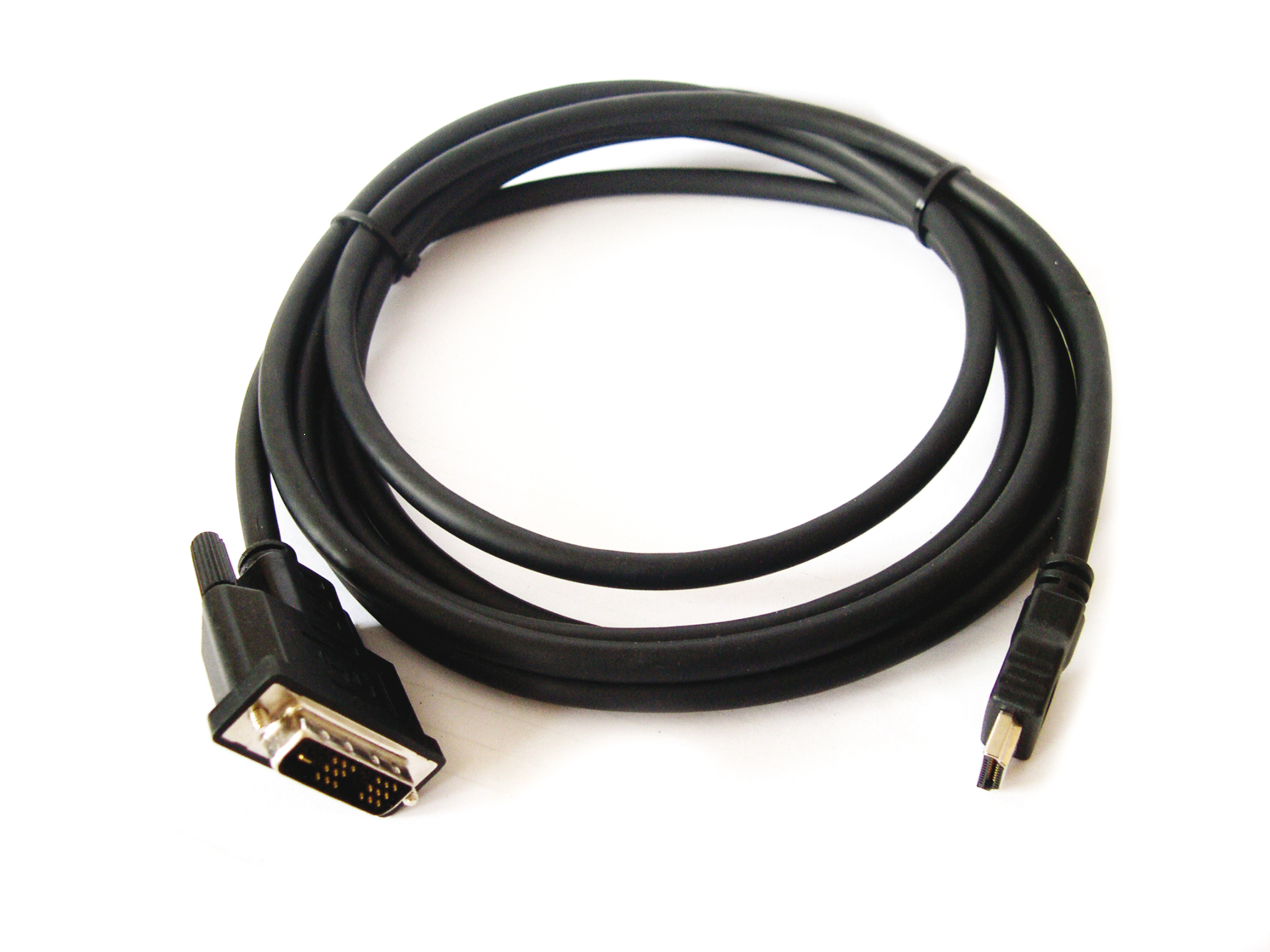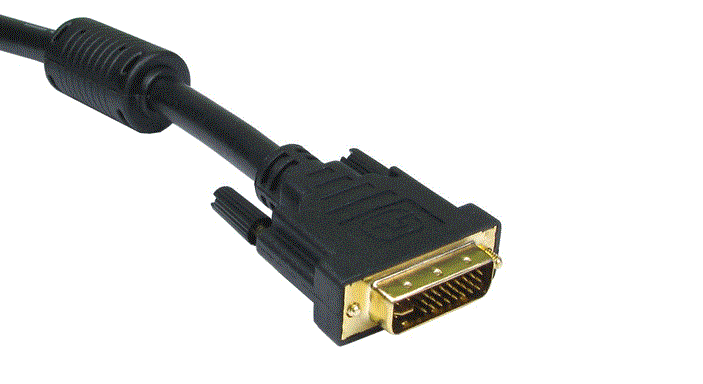HDMI to DVI Cables
What is DVI?
DVI, or Digital Visual Interface is a video display interface that is used to connect a video source to a display device, such as a television or a computer monitor. The interface is used to maximize the quality of flat-panel LCD monitors and modern video graphics cards. DVI replaced the short lived “Plug & Display” standard. Today, they are most popular with video card manufacturers. DVI connectors have a specific shape: it is multi-pronged apparatus with a square shape. They are easily recognizable and they look like the following:
As for the use of DVI connectors, they are most commonly found in computing devices, however, they are increasingly being used in television sets.
DVI and HDMI Using the Same Cable
Firstly, it should be said that DVI and HDMI are both adopted and approved for HDTV connections, therefore, often you can use one or another. DVI to HDMI connections are good together because they provide superior picture quality and eliminate the use of additional cables, which can be messy and unorganized. The difference is that HDMI cables have the ability to transmit high quality digital sound, and can also control signals incorporated into the interface. There is much argument over whether digital or HDMI streams are better. There is no doubt that HDMI can give you both crystal clear image quality but also superior sound quality. However, there are usually less problems that come up when transferring a digital signal.
Why DVI is better than VGA
VGA is an obsolete technology that was introduced in IBM computers in 1987. VGA means “Video Graphics Array.” These 15-pin connectors were very popular in PC’s during the 1990s. Today, only the lowest levels of computer manufacturers still enable this technology in their products. These types of connectors can only use 16-bit color. However, most computers today more commonly use 32- and 64-bit color schemes. This is what a VGA connector looks like:
Today, VGA technology is no longer the industry standard. Instead, most of our graphics technologies enable the use of DVI connectors. DVI is more modern and does work with 32- and 64-bit color schemes. A key highlight of DVI is that they have analog compatibility. However, DVI still has optional compatibility with VGA connectors. This compatibility is perhaps the greatest thing that made the DVI so popular. DVI is found not only in computer systems (which VGA only works with), but also in many television sets and cable boxes.
Also, VGA simply looks old. We have left the days when computers had large monitors and processors made of white composite. Today’s electronics have a sleek, slim style, and truthfully VGA connectors just don’t make the cut.
Choosing the Right Device for the Setup
There are a variety of different types of switches and splitters available at Cmple.com. Deciding which one you should buy depends on what you need it for and how many devices you are trying to connect. You can find DVI to HDMI converters, 2 Port Switches and Pigtail Switches (a Pigtail Switch just refers to the shape of the converter), 3 Port Switches and Pigtail Switches, 5 Port HDMI Switches, and HDMI to VGA converters. Some other options are between Powered and Unpowered Splitters, and some of these devices are even available with remotes for easy usage. Making the right decision all depends on the needs of the customer. Some research is required in order to determine what is best for the devices that you are trying to connect. However, one easy decision to make is choosing how many ports you need. If you are trying to connect two devices, get a switch with 2 ports. If you are doing the same with 5 devices, then choose a switch with 5 ports. It is as easy as that.
You need to choose whether your devices require a switch or a splitter. The explanation is in the terminology. A switch will allow you to switch between different devices and connections, while a splitter lets you use multiple devices at once by breaking the connection into pieces.
Determining How Many HDMI Hubs a Setup Needs
This really depends on how many HDMI outputs you were like to connect to your device. Say you have a camera and you would like to connect it to two HDMI-compliant monitors. In this situation you would need to get a splitter with two ports. Perhaps you own a restaurant and you want to display the baseball game on multiple televisions so that your customers can watch. Well, in this case you can use a 5-port switch or splitter and perhaps a Powered splitter to make sure that you can have good reception on each of the televisions. However, determining how many you need is not as relevant when using a switch, because switches simple switch the connection. Yet you can still choose how many devices you can switch the connection with.
Difference Between Powered and Non-Powered HDMI Splitters
When choosing a HDMI splitter, you have the choice between Powered and Non-Powered. The concept of a splitter is that you are splitting the HDMI signal in half, so you need some extra help to make sure that clarity is still maximized. A powered splitter helps move the signal along the wire through its own energy source. When deciding whether to use a powered or non-powered splitter, you simply need to figure out the distance that you are splitting the signal. In most cases, a non-powered will suffice and you can split your HDMI signal without a problem. But around 20 feet, the data transfer may start to falter, and at 25 feet you may encounter service disruptions. This is the distance in which a powered splitter would be preferable. Over a longer distance, the powered splitter will allow you to split your HDMI source without losing signal or having connection problems. Also, it is recommended to use a powered splitter if you are breaking the connection into more than three ports, because the more times you split the signal, the more likely it is that the connection can falter.





